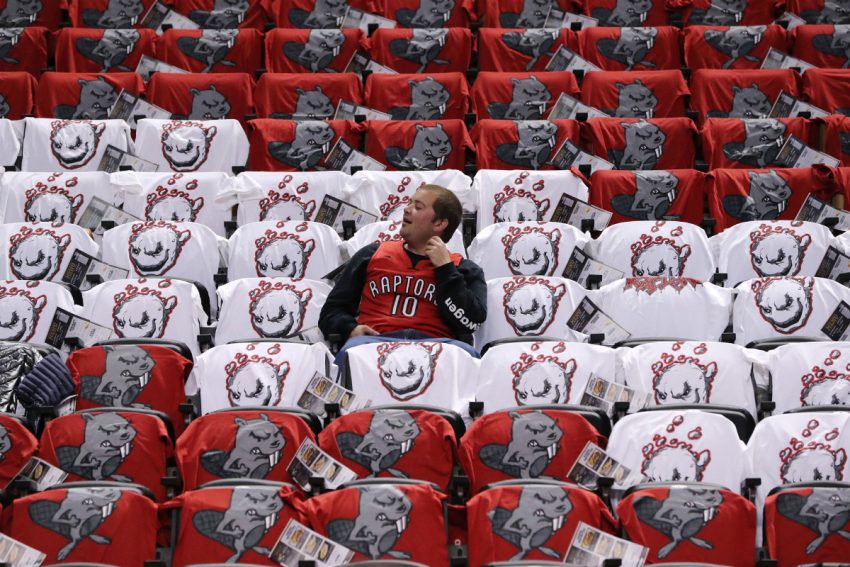The St. Louis Blues, fresh off claiming an NHL title for the first time in the franchise’s 52-year history, have found themselves on quite a high these last three weeks, with Promo Marketing’s Philadelphia base finding itself a part of the hoopla thanks to a promotional T-shirt born in the City of Brotherly Love. That garment and other merchandise items have proven huge sellers, and while many St. Louis businesses benefited from the win by selling commemorative gear, the excessive demand for goods ended up being too much for some establishments, with even Fanatics apparently unable to product enough Blues Stanley Cup merch in the days following the win.
Legends. #WeAllBleedBlue pic.twitter.com/tiNaOAvxPZ
— St. Louis Blues (@StLouisBlues) June 15, 2019
The Blues continued an interesting trend in the sports world, with a number of organizations recently claiming their franchise’s first-ever championships, a list that includes our Eagles. No matter how many parades a team has held, though, the hype that surrounds an athletic coronation always figures to be intense, and the Blues’ conquest—maybe because it resonated as an unlikely accomplishment—certainly did not disappoint those who genuinely like to see fans’ celebrate titles. In this case, the new champions were not players who had collectively come close to winning the Cup in previous seasons. They took the NHL by storm from early January on, and stores, come the playoffs, rewarded businesses that stacked shelves with Blues-specific items. Fanatics, as one might expect, profited from the windfall, relaying that Blues’ merchandise sales set a 12-hour post-championship game record among NHL clubs.
That apparel bigwig, however, was not immune to joining with other spots that, though they had known that people would clamor for championship attire, had not predicted the depth of their enthusiasm. Here’s an account from Bleedin’ Blue, a Blues blog:
One national retailer had a line stretched out a good 200 yards across their parking lot the night the Blues won. Perhaps half, or less, of those people got anything because the demand was not anticipated. Everything was sold out within 45 minutes. That store made over $25,000 in that 45 minutes—I know, because I work for this company, which is why they remain nameless—but they could have doubled that if they had the merchandise in store.
In that same store, the corporate representative was said to have had their jaw on the floor by the amount of people wanting to come in. However, instead of quadrupling future orders or maybe even more than that, they might have doubled the next one—at most.
So, when the next shipment came in, it was also gone within two hours. The first shipment only included 300 hats. Those were gone in 30 minutes.
And:
If you did not snag one off those initial orders, you were out of luck. Hats ordered online the night of did not come for a week. If you waited for one to show up in stores and then went online, you were initially told your item might not arrive until the end of July.
Fanatics own website was sold out of Locker Room hats and unable to fill orders with the speed they were coming in.
The aforementioned store above went two whole days without merchandise of any kind to sell because of poor planning on one side or the other. Eventually more championship shirts came in, but the buzz had died down.
Unbelievable. Forever memorable. #stlblues #StanleyCup pic.twitter.com/fL2cX3zxkp
— St. Louis Blues (@StLouisBlues) June 16, 2019
In other words, fans want championship goods immediately, and because certain places could not tend to wishes on the grandest scale, said entities suffered, according to Bleedin’ Blue. As the offseason unfolds, the Blues will no doubt continue to hawk an ample supply of merchandise, with some businesses probably thinking of some novel products right now. But some locations, in looking to have joined in on the economic jubilation, could not fully prosper. That could be a reflection of a number of factors, including workforce size, unique concepts and partnerships with promotional products and apparel businesses. No matter the explanation, this situation shows the difficulty involved in predicting how intensely a fan base will react to a title, especially when one considers a team’s market size and relative success.
Regarding the Blues, they certainly play in a big market, and since they had not sipped from the cherished chalice before this year, it was likely that the demand would be high. With the historic nature of their triumph, it seems that the win proved too enormous for everyone to have enough for supporters to snatch up. Therein lies a lesson. Perhaps someone can come to become an expert in predicting end-users’ spending habits for teams that have long championship droughts or zero titles to their names. Since there are a number of clubs that fit that description, including our Flyers, what a fun gig that could be!



